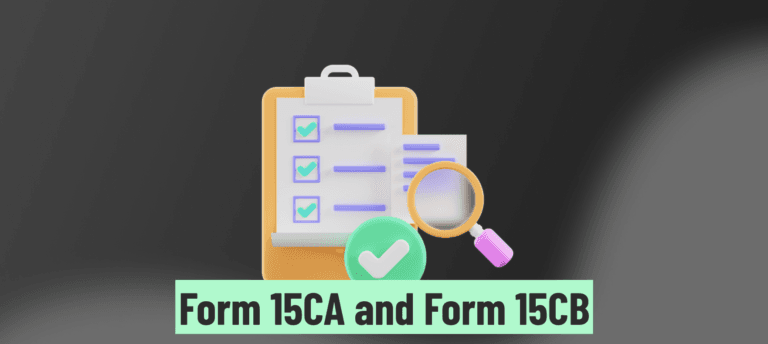The CIRP Process is a mechanism detailed under IBC 2016, designed to resolve insolvency issues for corporate entities in a time-bound manner. The process aims to protect the interests of creditors, balance the rights of stakeholders, and ensure the revival or liquidation of the corporate debtor. Here’s a detailed guide on the CIRP, covering its objectives, stages, key participants, and critical aspects.
Objectives of CIRP
- Resolution: Maximization of the value of assets of corporate debtor and resolve its insolvency issues.
- Revival: To attempt the revival of the corporate debtor as a going concern.
- Balance of Interests: Balancing of the interests of all stakeholders, including creditors, employees, and shareholders.
- Timely Process: To complete the insolvency resolution process in a time-bound manner, typically within 180 to 270 days.
Key Participants in CIRP
- Corporate Debtor: The company that is undergoing insolvency resolution.
- Financial Creditors: Entities that have lent money to the corporate debtor, usually banks and financial institutions.
- Operational Creditors: Entities that have supplied goods or services to the corporate debtor.
- Interim Resolution Professional (IRP): Appointed to take control of the debtor’s assets and operations and manage the CIRP until the Resolution Professional (RP) is appointed.
- Resolution Professional (RP): Appointed to manage the CIRP, including the preparation of the resolution plan.
- Committee of Creditors (CoC): Composed of financial creditors who have the power to approve or reject the resolution plan.
- National Company Law Tribunal (NCLT): NCLT is the adjudicating authorityr CIRP.
Stages of CIRP
1. Initiation of CIRP
- Application: A financial creditor, operational creditor, or the corporate debtor itself can file an application with the NCLT to initiate CIRP.
- Admission or Rejection: NCLT admits the application if a default is established and appoints an IRP. If not, the application is rejected.
2. Moratorium Period
- Declaration: Upon admission of the application, a moratorium is declared, prohibiting certain actions such as the institution of suits, continuation of existing suits, and transferring or disposing of the corporate debtor’s assets.
3. Appointment of IRP and Public Announcement
- IRP Appointment: The NCLT appoints an IRP who, immediately after appointment, is vested with the control and management of the corporate debtor.
- Public Announcement: The IRP makes a public announcement to invite claims from creditors.
4. Claims and Formation of CoC
- Claims Collection: The IRP collects claims from creditors and verifies them.
- Formation of CoC: The IRP forms the Committee of Creditors (CoC) comprising financial creditors.
5. Appointment of RP
- CoC Meeting: The first CoC meeting is held within 7 days of its formation to decide whether to continue with the IRP as RP or appoint a new RP.
- Approval by NCLT: The RP is appointed by the CoC and confirmed by the NCLT.
6. Preparation and Submission of Resolution Plan
- Information Memorandum: The RP prepares an information memorandum containing details of the corporate debtor’s assets, liabilities, and financial position.
- Inviting Resolution Plans: The RP invites resolution plans from potential resolution applicants.
- Evaluation of Plans: The RP evaluates the resolution plans and presents them to the CoC.
7. Approval of Resolution Plan
- CoC Approval: The CoC reviews the submitted resolution plans and approves one with at least a 66% majority vote.
- NCLT Approval: The approved resolution plan is submitted to the NCLT for final approval.
8. Implementation of Resolution Plan or Liquidation
- Implementation: If the NCLT approves the resolution plan, the RP oversees its implementation.
- Liquidation: If no resolution plan is approved within the stipulated time, the NCLT orders the liquidation of the corporate debtor.
Critical Aspects of CIRP
1. Moratorium
The moratorium provides a breathing space for the corporate debtor by suspending legal actions and proceedings against it. This helps in preserving the value of the debtor’s assets.
2. Role of CoC
The CoC plays a crucial role in the CIRP as it approves the resolution plan. Financial creditors, being part of the CoC, make key decisions regarding the insolvency resolution.
3. Resolution Plan
The resolution plan is a proposal to revive the corporate debtor and must provide for the payment of insolvency resolution process costs, operational creditors’ dues, and financial creditors’ dues, and ensure the management of the corporate debtor post-resolution.
4. Timelines
CIRP is designed to be a time-bound process to ensure swift resolution. The entire process is to be completed within 180 days, extendable by another 90 days, making it a maximum of 270 days.
5. Liquidation
If the resolution plan is not approved within the stipulated timeframe, the corporate debtor proceeds to liquidation. In this scenario, the NCLT orders the sale of the corporate debtor’s assets, and the proceeds are distributed to the creditors based on the priority of their claims, as per the provisions of the IBC.
The CIRP Process under the IBC is a structured framework designed to address corporate insolvency in a systematic and time-bound manner. By involving key stakeholders such as creditors, resolution professionals, and the NCLT, the process aims to ensure fair and efficient resolution of insolvency, balancing the interests of all parties involved. The efficiency of the CIRP is a key aspect, instilling confidence in its effectiveness. Understanding the stages, participants, and critical aspects of CIRP is essential for effective navigation and management of corporate insolvency.
At Ujjwal Gupta & Co
We, at Ujjwal Gupta & Co, are dedicated to delivering personalized, high-quality solutions tailored to meet your financial and business needs. With our team of professionals and a client-first approach, we ensure that every challenge is met with expert guidance and strategic insight.
We are dedicated to ensuring your business’s success by providing best service practice available in the industry and that too at a cost effective pricing. Our team of experts is excited to work with you and provide the support you need to thrive in the Indian business landscape.
Our only motive is to create Value for Our Clients and accordingly, have a Client Value System at our Office.
So, let us help you navigate the complexities of finance and compliance, empowering you to focus on what matters most — growing your business. Get in touch today, and take the first step towards financial peace of mind.
The CIRP is a process initiated to resolve the insolvency of a corporate debtor. It aims to revive the company or recover as much value as possible through restructuring or liquidation. The process is governed by the IBC and managed by a Resolution Professional (RP) under the supervision of the Committee of Creditors (CoC) and the National Company Law Tribunal (NCLT).
CIRP can be initiated by:
- Financial creditors, such as banks or financial institutions, when a company defaults on a debt.
- Operational creditors, such as suppliers or vendors, for unpaid dues.
- The corporate debtor itself, if it is unable to repay its debts, can file for voluntary insolvency. The application for CIRP is made to the NCLT, which evaluates whether the conditions for insolvency are met.
The key stages of CIRP include:
- Filing of application with NCLT to initiate the process.
- Admission of the application by the NCLT, which declares a moratorium and appoints an Interim Resolution Professional (IRP).
- Formation of the Committee of Creditors (CoC) and appointment of a Resolution Professional (RP).
- Preparation and approval of the resolution plan by the CoC.
- Approval of the resolution plan by the NCLT, or if the plan is not approved, the company may move toward liquidation.
The RP plays a central role in managing the insolvency process. Key responsibilities include:
- Taking over the management of the corporate debtor.
- Managing its operations as a going concern.
- Conducting meetings with the CoC and providing all necessary financial and operational information.
- Preparing and circulating the Information Memorandum to potential resolution applicants.
- Examining resolution plans and submitting them to the CoC for approval.
A moratorium is a legal order passed by the NCLT at the time of admitting the insolvency application. It stays all legal proceedings, prevents creditors from taking action against the corporate debtor, and prohibits the transfer or sale of assets. The moratorium is in effect throughout the CIRP and ensures that the company’s assets are protected during the resolution process.
The Committee of Creditors (CoC) consists of financial creditors of the corporate debtor. It plays a decisive role in the CIRP, including:
- Evaluating and approving resolution plans.
- Overseeing the functioning of the RP.
- Voting on critical decisions, including the approval of the final resolution plan or deciding on liquidation. The CoC must approve key decisions with at least a 66% majority (previously 75%).
A resolution plan is a proposal submitted by potential investors, promoters, or other third parties to revive the corporate debtor. The plan typically outlines:
- Repayment or restructuring of debt.
- The strategy to keep the company operational as a going concern.
- The timeline for payments to creditors. The CoC reviews the resolution plan and, if approved, submits it to the NCLT for final approval.
As per IBC regulations:
- The CIRP must be completed within 180 days from the date of admission by the NCLT.
- This period can be extended by 90 days with approval from the NCLT, bringing the maximum time frame to 330 days, including any legal proceedings or delays. If the process is not completed within the stipulated time, the corporate debtor may move into liquidation.
If the CoC does not approve any resolution plan within the prescribed time frame, or if the NCLT rejects the resolution plan, the corporate debtor may be forced into liquidation. During liquidation, the liquidator will sell the company’s assets to repay creditors in the order of priority prescribed under the IBC.
Why Choose UGC?

Client Centric Approach
Client is the key driver of our service offerings. Our approach to service offerings is based on a client centric and customized approach. Our specialized teams are a mix of technical and industry experience in order to serve clientele for their specific needs.

Team Work
We have built high performing teams supported by strong work ethic. Our team is a mix of experts, professionals and support staff from technical and varied academic, social and ethnic backgrounds. We believe diversification plays a vital role in motivating the team.

Quick Turnaround
We always endeavour for a quick turnaround time to serve our clientele. We are supported by an experienced and client focussed support teams to offer timely services to our clientele. In case of any business exigencies and time sensitive service requirements, you can always count on us.

Open Communications
We believe that open communication is the core principle in order to demonstrate trust, build long lasting and valuable relationships with clientele. We are committed to ensuring transparency in communication, service offerings and delivery. We provide professional services to our clients.

Client Value System
We value for the Client time and thus, we offer services that are value for money. Quality professional services are provided to our clients, so that they are able to achieve their desired results. We are a quality trademark in the industry and thus, our clients count on us always.

Quality in Delivering Work
Our service offerings are driven by quality and reviews at every level. We strive to provide a qualitative and value-added delivery to our clientele. At all times, we endeavour to provide exceptional client service by meeting client expectations and driving client satisfaction.





















